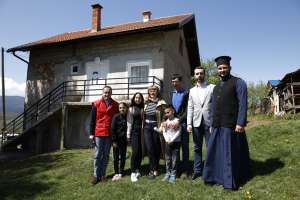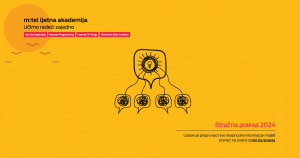SARAJEVO, February 2 (FENA) - In the past year, 105 exhumations were conducted in Bosnia and Herzegovina, 95 bodies and two 'cases' were exhumed.
Spokeswoman of the Missing Persons Institute of BiH, Emza Fazlić, said in an interview with FENA that the Institute's investigators went on the field 1,698 times but did not always find what they were looking for.
By: Aida Kovač
She recalled that a mass grave was found on Igman last year, where complete remains of 12 victims from Donji Hadžići were exhumed.
She also noted that remains of at least five people were found in Hrtar town in Višegrad, and at least seven bodies were exhumed in Derventa.
Fazlić said a number of re-exhumations and identifications were also cunducted last year.
“We conducted 323 re-exhumations during which 365 bodies were re-exhumed. In Srebrenica, re-exhumation took place a few days after collective funeral on July 11, when the remains of 33 victims were buried in the Potočari Memorial Center. On that occasion, 120 graves were re-dug to assemble the body parts that were subsequently found,” Fazlić said.
She recalled that re-exhumation was also conducted in Vlasenica in 56 cases immediately after the collective funeral, and in Zvornik in 46 cases.
Over the past year, 242 people have been identified.
“Families have opted for final identification, although the DNA finding of their identity arrived much earlier,” said Fazlić.
According to her, what is of great importance to the Institute for Missing Persons of BiH is that the Central Register of Missing Persons was published last year on the Institute's website.
On August 30, more than 27,000 missing persons have been reported whose missing records have been verified.
“The process of verification, of missing persons' reports, is ongoing and 1,800 applications were verified last year. We continue to receive reports of missing persons. Last year, we had 32 requests for missing persons,” Fazlić said.
“However, we still have a large number of unidentified remains in mortuaries in BiH, about 1,700 of them. For this reason, it was suspected that these could be misidentifications made using the classical method, when the process of identification was conducted by identifying personal objects or clothes found with the remains. That is why it was necessary to check these classical identifications and to collect new blood samples from family members of such cases, in order to check whether those identifications were correct,” said Fazlić.
She added that about 1,000 such samples have been collected so far and 40 cases were misidentified.
She recalled that Missing Persons Institute of BiH is still searching for 7,200 missing persons.
“This process is significantly hindered due to the lack of reliable information on the locations of grave. As time goes by it is getting more and more difficult to get the right information. The fact is that information are constantly hiding. Those who know do not want to talk about it. We also do not have archives containing information that might help us finally reach some of the mass gravesites,” said Fazlić.
(FENA) A. B.











